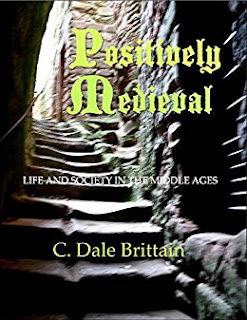To a western medievalist, Byzantium is something of an outlier. It's that place over there, in what is now Turkey, and they used Greek rather than Latin, and maybe we shouldn't think of them as "really" medieval.
But this does the Byzantines a disservice. The original Roman Empire had extended all the way around the Mediterranean, including the area of Anatolia, the "Asian" part of modern Turkey, east of the passage from the Mediterranean into the Black Seaas well as the western or so-called European part of what is now Turkey. They called the whole area Byzantium. In this end of the Mediterranean, Greek rather than Latin was the dominant language.
In the fourth century AD, the Roman emperor Constantine moved his capital from Rome to Byzantium. For another century and a half, there were sometimes two emperors, one in Rome and one in Constantinople, the "new Rome" (guess who it was named for). Sometimes they got along, sometimes not. In 476 the eastern Byzantine Roman emperor had the western one, a barbarian general, assassinated, and there were no more western Roman emperors until Charlemagne in 800. But the line of Roman emperors in Constantinople continued for another thousand years.
The Byzantine region was a highly cultured, wealthy place. Its Christianity was Greek-speaking, following the original version of the Bible and earliest theologians, whereas in Europe and the western Mediterranean things had to be translated into Latin (on which see more here). Religious art developed icons, images of the saints, as well as gorgeous mosaics. The church of Hagia Sophia ("Holy Wisdom"), built in Constantinople in the sixth century, was the largest church in Christendom.
It is pictured above. (The four minarets on the corners were added during its later time as a Muslim mosque. Now it is a museum.)
The economic breakdown of the late Roman Empire (fifth-sixth centuries) drew eastern and western Christendom further and further apart, with the decline of trade and communication, but the real blow came in the seventh century, with the rise of Islam. North Africa and most of the eastern Mediterranean, except for Byzantium, came under Muslim rule. The Byzantines heavily influenced Arabic art and culture and vice-versa, even though the two were officially deadly enemies. Among the Christians, East and West, Greek and Latin, viewed each other with increased suspicion. In 1054, the two major versions of Christianity excommunicated each other, a breach still not completely healed today.
The Crusades were begun at the end of the eleventh century at least in part in the hope (wildly over-optimistic) that fighting Muslims together might bring East and West back together. In fact, the Fourth Crusade in 1204 ended up with the western army sacking Constantinople and installing their own Latin emperor and patriarch. The Byzantines eventually got their capital back, but not before all the fighting between Christians had seriously weakened Byzantium.
The Turks had, in the previous century or two, come into the Middle East and been converted to Islam. In 1453, they finally, after years of fighting, took Constantinople, renamed it Istanbul, renamed the region Turkey, turned Hagia Sophia into a mosque, sent the leaders of Greek Orthodoxy into exile, and ended the line of Byzantine Roman emperors. This was the real "fall of the Roman Empire."
© C. Dale Brittain 2018
For more on Byzantium and other aspects of medieval history, see my ebook, Positively Medieval: Life and Society in the Middle Ages, available on Amazon and other e-tailers.


No comments:
Post a Comment